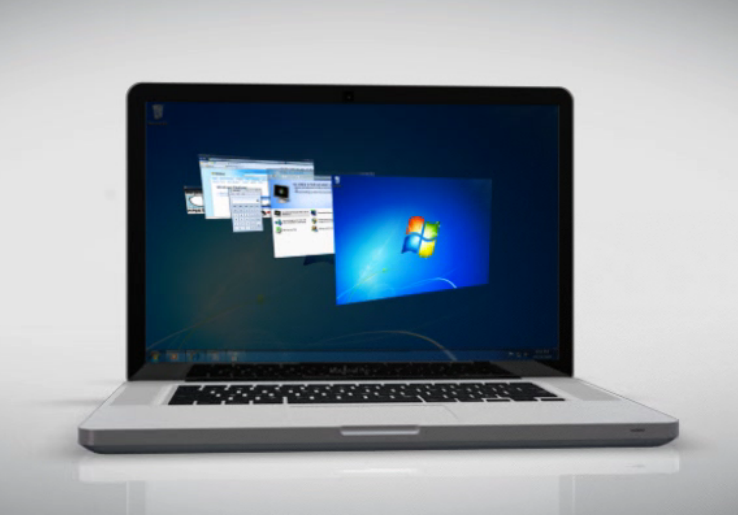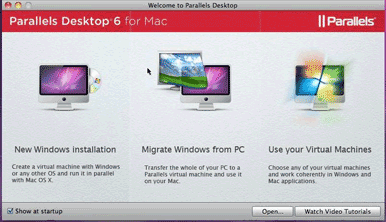-
What Is Parallels Desktop 6 For Mac카테고리 없음 2020. 10. 29. 20:19
- Parallels Desktop For Mac Download
- Parallels Desktop For Mac Review
- Parallels Desktop 6 For Mac Download

There are two big names in the virtual machine software industry who have both developed high-class, consumer-friendly virtual machine monitor apps and as such are competing directly against one another. These two are Parallels Inc. and Dell’s subsidiary VMware Inc, with the first to launch its software being Parallels in 2006, followed by VMware a year later.
Parallels Desktop 6 for Mac will cost $79.99 for the standard retail version and $39.99 for the student edition. Current Parallels Desktop for Mac owners will be able to upgrade for $49.99, but. Parallels Desktop for Mac Pro Edition is the easiest and most powerful application to run Windows on Mac for developers, testers and experienced power users. Specifically tailored for users who need the best performance and extended functionality for running non-Mac applications on Mac. Parallels Desktop 15 adds support for Metal and Windows DirectX 11, which allows it to run a wider range of graphics software than most of its rivals, and for new Catalina features such as Sidecar. Specifically, I was looking for an acceptable Mac replacement for Quicken on Windows. Quicken for Mac was an inglorious mess, MoneyDance was too labor intensive to update, CrossOver has poor app compatibility, etc etc. I tried Parallels Desktop 6 for a about three days and ordered it on the fourth.
Sold at the same price point in the U.S., both Parallels Desktop and VMware Fusion pack in tons of features that make deploying and managing virtual machines a piece of cake – even for rookie computer users. If they’re both on the top of their separate games, then, how can you even choose between the two?
OverviewIntegrationPerformancePricingPaymentCustomerFeatures VMware Fusion
Parallels Desktop
Logo Rating Reviews Visit Free Trial Free Trial Free Trial Coupons Coupons Coupons Import Boot Camp Partitions Windows Download Windows Integrated Into macOS Guest OS Support Virtual Copy of macOS Encryption Automate Snapshots Customize Startup Quick Look Integration Windows Data Transfer Shared Folders DirectX 10.1 Support Microsoft Cortana Integration iCloud/Dropbox/Google Drive Integration 'Open With' Option Performance Notification Center Resource Optimization TRIM Support Disk Cleanup Resolution Pricing Price $6.66/mo $79.99 Free Version 14 days 30 days Free Version No No Money-Back Guarantee 30 days No Payment Methods Visa PayPal Mastercard American Express Wire Transfer Liberty Reserve Bitcoin Customer Support 24/7 Email Live Chat On Call Remote Desktop Community Twitter Facebook Parallels Desktop
If the secondary platform you'll be using on the Mac is Windows, then Parallels Desktop will streamline its deployment. Thanks to its convenient one-click install option, users can just instruct the app to download a legitimate copy of Windows from Microsoft.
While both hypervisors do their job well, what makes the difference between Parallels Desktop and VMware Fusion are the corresponding feature sets that they each pack. For example, with Parallels the guest operating system integration level goes as deep as having a button in Safari to open a specific website in Internet Explorer and a “Call with iPhone” option when using the Windows browser.
InstallerWindows 10Transfer FilesSharedFolder SharingApp SharingOpen in IEParallels Desktop Downloading Windows 10
Shared Folders
App Customization Options
Running two operating systems on the same computer will obviously have an impact on system resources, but Parallels Desktop offers the option to optimize energy saving settings for more personally tailored performance. Parallels will also pause the virtual machine if it notices that no apps are running. But it is in the performance where Parallels really shines, with a noticeably speedy boot up time when launching Windows. Downsides include the Windows app appearing in the dock as an app folder and Coherence mode in need of some design tweaking.
VMware Fusion
While it doesn't have the one-click Windows install option of Parallels’ software, VMware Fusion is a trustable hypervisor for a wide number of guest operating systems. Running this VMM will streamline the integration level of the guest operating system at a very early stage. Compared to its main competitor, VMware's isolated or seamless integration of the secondary OS is far more simplified and automated.
When it comes to performance, VMware Fusion feels just as quick; sometimes the reaction time is faster than Parallels' but the boot times matched that of its rival. It lacks the energy saving settings of Parallels Desktop, however, although it does also pause the virtual machine when it detects a period of zero activity.
InstallerSelect Operating SystemLack of Install DiskChoose FirmwareIntegration OptionsSharingHardware AllocationSelect Operating System
Choose Windows Firmware
Enable Shared Folders
When it comes to virtual machines, though, their ability to take snapshots of the guest operating system is one of the most convenient features, making troubleshooting much easier. Unfortunately, this is where VMware Fusion falters, since it doesn’t support automated snapshots as Parallels Desktop does and, therefore, means users are unable to restore their virtual machines without losing any data.

Conclusion
The heavy load of features makes choosing between these two virtual machine software packages a hard task since both have the same $79.99 price tag in the U.S. What makes the difference, though, is the pricing strategy that the two companies follow.
Parallels Desktop For Mac Download
Parallels Desktop is available as a subscription, which means that users will always get the latest software and features, but the license is on a per computer basis. The lifetime license option is priced higher at $99.99.
VMware Fusion's pricing strategy is a bit different, just like its feature set. The company behind the software charges users for a lifetime license, as well as offering an upgrade at a discounted price. However, it is worth noting that this license is per user, so you can install VMware Fusion on all your personal devices.
Both virtual machines are available with a free trial, the only difference between the two being that Parallels Desktop provides a 14-day trial and a 30-day money-back guarantee, while VMware Fusion can be tested for 30 days before you are prompted to buy a license.
Transitioning from a PC to a Mac used to be an exercise in compromises.
Among the PC applications that were available for the Mac platform, some didn't work like their Windows counterparts, some weren't updated as often, and some simply didn't work at all. Add to this the mystery of peripheral support, and it's no surprise that users avoided Macs when PC software was needed.
Virtualization promised to reduce the hassle of switching, but interfaces were clunky and performance was lacking. That's all changed with the release of Parallels Desktop 6 for Mac.
End-User Advantages
Parallels client virtualization software for running Windows apps on a Mac showcases what a seamless Mac and Windows environment can be, from installation to actual use. During the installation process, the product carefully explains menu choices and uses diagrams to show the user which selections affect which settings.
There's a fully automated express-Âinstall feature, as well as a tool to create a virtual machine entirely from an existing PC, so there is no need to reinstall programs and reconfigure settings. Parallels Tools automatically loads, thus enabling 3D support, mouse synchronization and seamless drag-and-drop.
Once the virtual machine setup is complete, Parallels accepts almost any external device. When a device is inserted, a user-friendly window appears and asks which OS the user would like to connect to, then Parallels takes care of the rest.
Parallels Desktop For Mac Review
In addition, the increased speed of ÂParallels 6 will astound any user. Windows 7 resumes in less than 10 seconds, and applications — whether 3D or not — run at near-native speed to a Boot Camp partition.
Why It Works For IT

Blending the security and stability of OS X with the compatibility of Windows ranks high on any IT department's wish list. Combine that with the speed of ÂParallels, and the seemingly impossible becomes possible for any type of user. The most important advancement of interest to IT departments is the combination of Crystal and Coherence modes. These types of integration between the Mac and Windows operating systems were separate options in the past, adding to the confusion of which would offer a better experience for the end user. Now, with only Coherence mode available (the Crystal features have been added), users can be assured of the best possible Windows experience on a Mac.
Parallels has also made great strides in seamlessly sharing files between operating systems, so much so that the Mac OS will set file types that open only in Windows to default as such. This means there's no user confusion about which program will be needed to open which file, or how to make it happen; Parallels takes care of it automatically.
As a final note, the migration tool built into Parallels significantly reduces the overhead for IT departments when transferring users from a PC to a Mac. Overall, the stabilÂity and usability of Parallels is something that every IT team can appreciate.

Disadvantages
System requirements needed to achieve the full experience with Parallels are on the upper end. The price of admission for a smooth virtual Windows 7 environment starts at a new dual-core CPU and at least 4 gigabytes of RAM, coupled with a decent graphics processor for the Windows Aero effects. Though Parallels automatically compresses virtual disks, you'll need hard-drive space available for both the host and the guest OSes.
More On
Parallels Desktop 6 For Mac Download
Related Articles